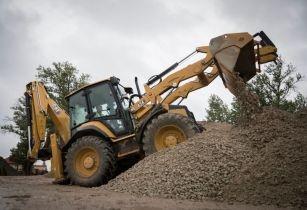Caterpillar has announced four backhoe loader models such as Cat 428, 432, 434 and 444 models
These models replaced the 428F2, 432F2, 434F2 and 444F2 machines respectively.
The 422F2 will cease production and the 426F2 remains unchanged.
The Cat backhoe loaders offer similar model platforms throughout the line to deliver component commonality and operating similarities throughout range. These machines will also display the new Cat trade dress and nomenclature, which removes model suffixes.
Achieving greater performance and versatility
The Cat 3054C and C4.4 engines remain on the new series. All models in the new backhoe loader line feature standard four-wheel drive with rear differential lock for improved traction in poor ground conditions.
A new four-speed powershift transmission is available as an option on the 428 and 434 and is as standard on the 432. The new powershift option enables easier on-the-go gear shifting for the operator. The 444 will continue to be fitted with a fully automatic transmission as standard.
The 432 and 444 models are equipped standard with low-effort electro-hydraulic (EH) loader and pilot backhoe controls. To meet customer preference, standard mechanical backhoe controls on the 428 and 434 models can be optionally upgraded to pilot controls.
The optional performance boom cylinders are available on the 428 and the 434, offering up to 25 per cent more boom lift capability to enhance operating performance. Performance boom cylinders are standard on the 432 and 444 models.
To increase machine utilisation, the Cat backhoe loader line can be equipped from the factory or as a field installed kit with optional Integrated Tool (IT) carrier loader couplers for fast work-tool changes. These new backhoe loaders are compatible with F2 series attachments, eliminating the need to purchase new attachments, lowering operating costs.



